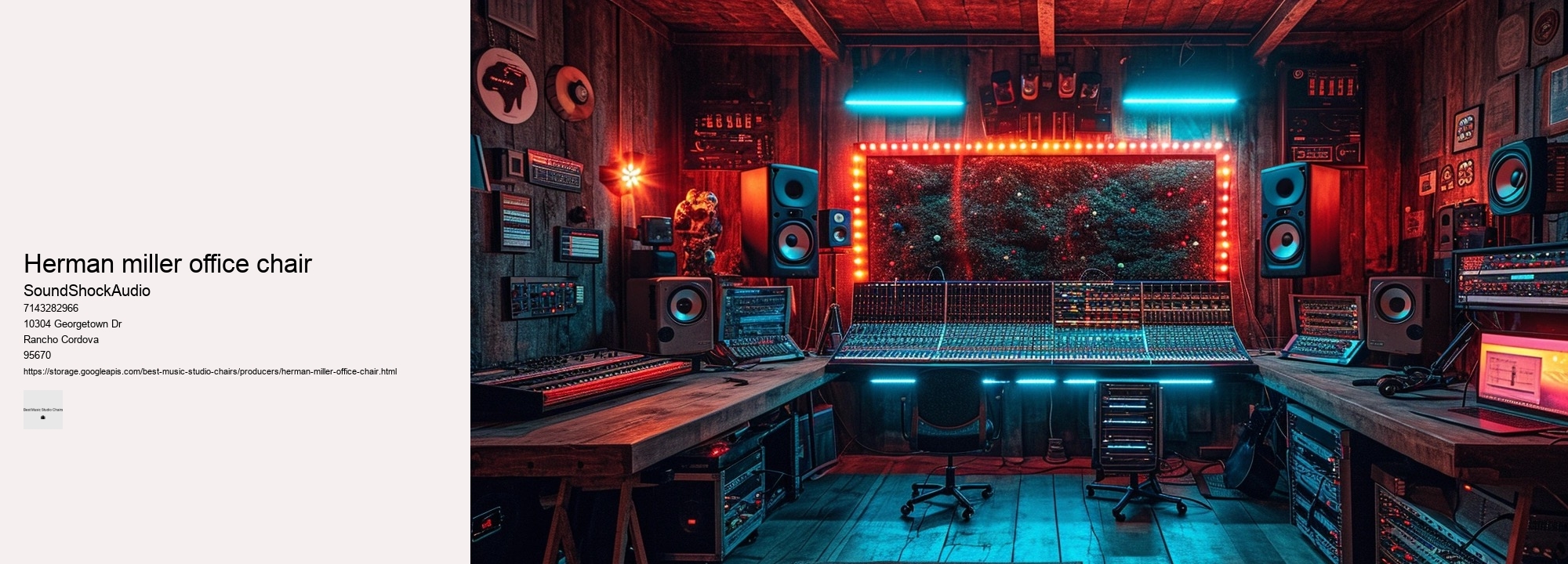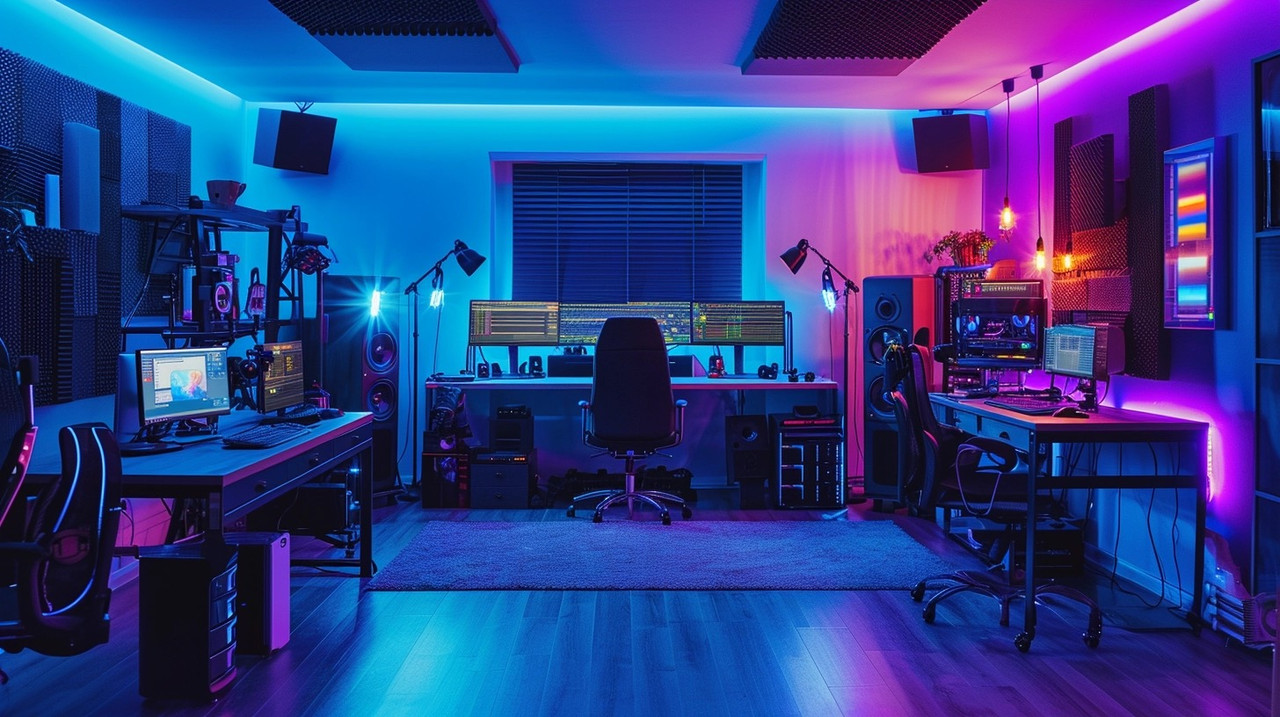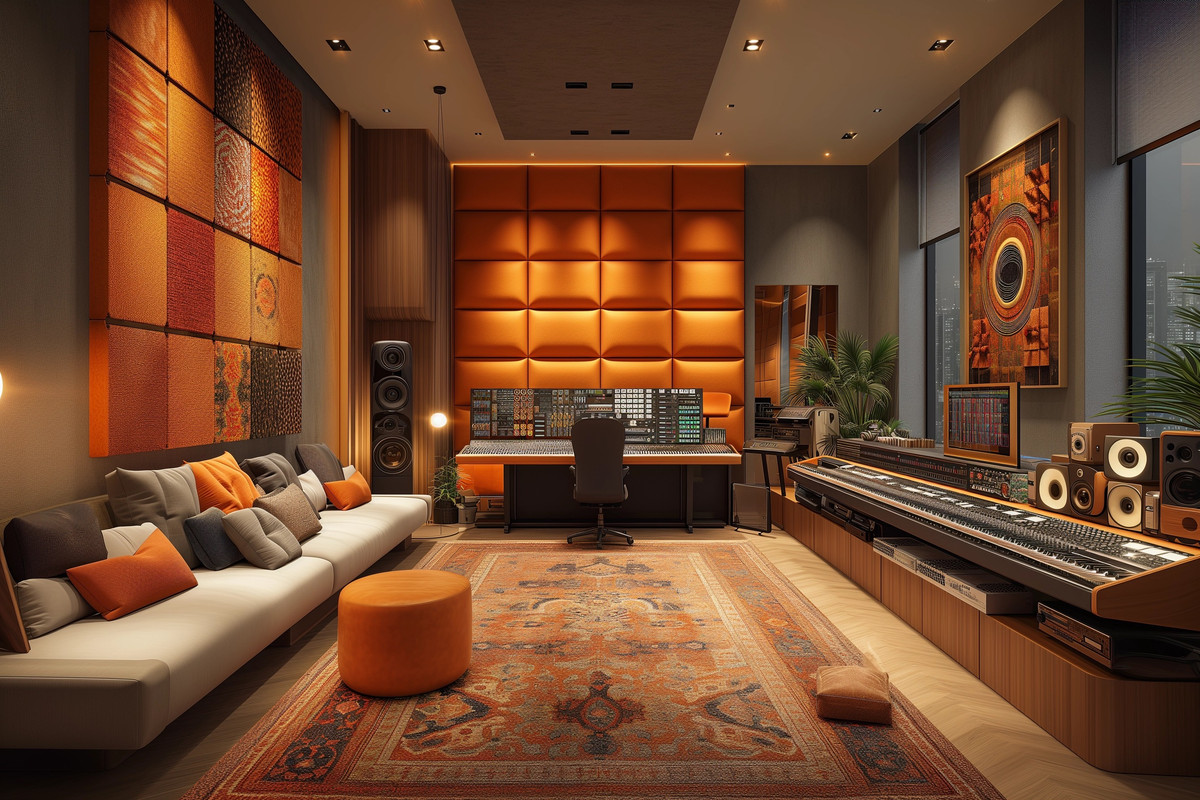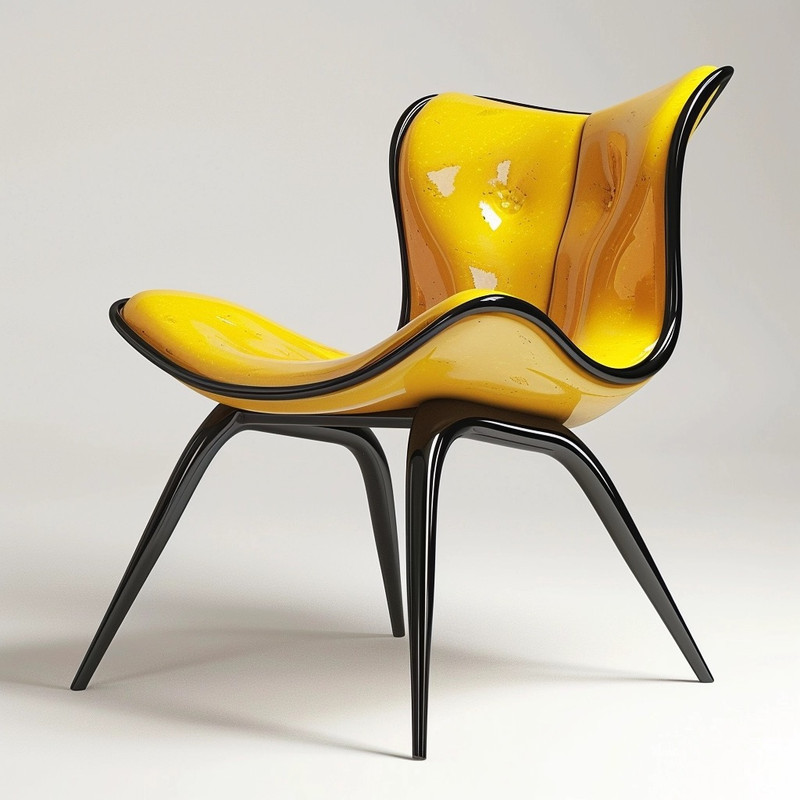

As we delve into finding the best chairs for enduring studio sessions, we'll consider key features that contribute to a supportive seating experience. Does sleek modern design quicken your heart? music studio While not as advanced as some higher-end models, its simple design coupled with decent build quality makes it suitable for less intense studio environments.
Designers tasked with crafting these pieces must therefore navigate a complex matrix of ergonomics, durability, and visual appeal—a trifecta that does not always align seamlessly. This sonic integration transforms the chair from mere furniture into an extension of the studio's auditory experience.
A striking example is the incorporation of motion technology allowing seats to subtly move with the user, preventing static pressure points and promoting circulation. The aesthetics of these chairs are not merely a byproduct of function but an intentional dialogue with the very essence of style.
Incorporating standing desks or sit-stand workstations into one’s environment offers another layer of protection against the perils of sedentary behavior. Chairs designed with music producers' specific needs in mind offer tangible benefits through increased comfort levels leading to prolonged concentration spans which directly affect output quality.
Music producers often spend prolonged periods seated while mixing or mastering tracks. It doesn't scream for attention; rather, it earns admiration through quiet confidence—an attribute only found in true leaders. A top-rated studio chair isn't just furniture; it’s an indispensable companion on your creative journey—a steadfast ally ensuring every note is hit with precision because you stayed comfy through those intense mixing marathons. Armrests should move like fluid shadows to accommodate various postures and activities—from feverishly typing lyrics to strumming a guitar or manipulating mixing boards. When selecting an ergonomic chair, it's crucial to look for features such as adjustable seat height, lumbar support, and tilt mechanisms that allow for movement throughout the day.
Through ergonomic furniture options combined with personal vigilance regarding posture and movement habits, we stand a much better chance of safeguarding our health against the silent yet significant threats posed by inadequate seating arrangements. Next, think about the materials used in constructing the chair. Moreover, time equals money in any production environment - be it music, video editing, or graphic design - and efficiency is king. Durability is another essential attribute since music production can sometimes be a vigorous activity filled with moments of excitement and intense focus.
Herein lies a whimsical exploration of top-tier sitting apparatuses heralded by music professionals. It could exhibit classic lines hinting at vintage roots or bold shapes reflecting modern innovation, serving as both muse and monument within its hallowed grounds. Their chairs are silent partners in this symphony of skill, providing a foundation upon which their artistry can flourish. When embarking on this journey, comfort reigns supreme.
Tailoring this aspect of a chair helps cradle the natural curve of your spine, offering targeted relief and preventing slouching. Equally important is investing time into testing chairs before making a purchase. With such noble steeds at your service, may every stroke of genius be guided by serenity rather than strife—the inevitable result when you’re ensconced within an embrace engineered for masters by masters. Secondly, swivel away from monotony by selecting a base with wheels or one that pirouettes effortlessly.
Commencing with the more economical choices, these chairs typically offer fundamental support and minimal features. The throne for any serious producer isn't just about physical ease—it must also inspire confidence and enhance focus. Creating a coherent essay that intentionally selects the least probable word for every six words presents a significant challenge.
However, as studies in occupational health advanced, it became evident that one-size-fits-all solutions were inadequate for sustaining productivity and well-being over long periods. Imagine a chair designed with the precision of a finely tuned instrument—a seat that harmonizes with your body’s movements as seamlessly as a maestro conducts his orchestra.
Durability is another key consideration. This unique seat, designed with a Scandinavian touch of minimalism and ergonomic sensibility, is often not discussed in popular office furniture conversations, but it deserves acclaim.
Before a single note resonates through the studio, seasoned veterans invest time in prepping their workspace. This pursuit of auditory bliss can span hours, if not days - a testament to the dedication required to birth a musical masterpiece.


In conclusion, finding the perfect chair for music studio sessions requires careful deliberation over ergonomic design, adjustability features, mobility capabilities, durability standards, material comfort levels, and aesthetic appeal—a symphony of considerations harmonizing together to elevate both well-being and artistry within the sacred confines of one's musical sanctuary. Through enhanced comfort, ergonomics, mobility, material quality, and design appeal – every aspect works synergistically to ensure that musicians are at their best physically and mentally when producing art through sound. Moreover, materials matter when it comes to long-lasting comfort and durability. As ergonomic research continues pushing boundaries alongside technological innovations in materials engineering; studio chair designs will undoubtedly evolve even further—making today's game-changing features tomorrow's standards. Thirdly, mobility within the workspace enhances efficiency and keeps creative juices flowing.
Secondly, comfort cannot be overstated. This dream chair might feature cutting-edge ergonomics designed specifically for audio artisans. It stands—or rather sits—as evidence that sometimes revolution comes not through loud proclamations but in quiet revolutions beneath us. These chairs offer adjustable features such as lumbar support that molds to the contours of your spine, armrests that align with your natural posture, and seat pans that encourage circulation even after hours of being seated.
However, ensure the casters are tuned to your floor type; carpet demands different wheels than hardwood. In conclusion, while whimsical furniture pieces may spark temporary intrigue or amusement among musicians seeking uniqueness within their space, ultimately they fall short compared to professionally tailored solutions when aiming to unlock one's full music potential. Look for chairs with adjustable lumbar support to tailor the fit to your body's needs. Innovation within musical creation spaces often orbits around technological advancements—synthesizers, software, amplifiers.
Without lumbar support or adjustable armrests tailored to align with your body's unique specifications, your spinal alignment may suffer silently as you focus on blending tracks together. In conclusion, acknowledging the profound impact that proper seating has on preventing fatigue and injury is paramount for maintaining overall well-being. Consider materials as well: breathable meshes ensure ventilation during summer's sweltering assaults; meanwhile, supple leathers provide warmth when winter weaves its chilling tapestry across studios. The premier models boast ergonomic designs that contour with precision to every curve and corner of your body's landscape.
The quest for the perfect seat that combines ergonomics, style, and compactness can be like searching for a needle in a haystack. Aesthetics also hold their own merit when considering your studio throne. Certainly! engineer chair
Fourthly, note the height of creativity—or rather, the height adjustment of your chair. This subtle shift in mindset can trigger a cascade of motivation and confidence that permeates through every project you tackle.
However, comfort extends beyond just physical well-being; it encompasses the mental state as well. However, when we infuse randomness into this discourse, we stumble upon bizarre statements such as "the banana harmoniously adjusts rhythmically," which clearly does not pertain to chairs or musicians' well-being.
A comfortable chair contributes positively to our focus and efficiency. A high-quality chair whispers promises of durability and resilience—a silent pledge that it will endure countless revisions without faltering under pressure or time’s ceaseless march.

Musicians should have access to comfortable seating adjusted specifically for their posture and instrument positioning, reducing physical strain over prolonged periods. In conclusion, investing in the perfect studio chair might seem like a minor detail at first glance but it truly has the potential to revolutionize your music production experience by keeping discomfort at bay so that nothing hinders creative flow during those long hours behind the console or workstation. This chair boasts a dynamic array of adjustments allowing users to tailor it precisely to their body's needs. Another aspect commonly overlooked but tremendously influential is ergonomics.
Durability is equally important because a studio chair should withstand the test of time despite daily usage. Ergonomic chairs encourage a sitting posture that aligns your back, neck, and hips, reducing strain on these areas. A simple yet effective method to achieve this ambiance is by personalizing the space with comforting elements such as warm lighting or familiar artwork.
Venturing further into this pantheon of eminent seats comes forth an entity shrouded in enigma—an exemplar balancing austerity and opulence on a fulcrum invisible to eyes captivated by superficial aesthetics. A good studio chair should provide ample support to your back, particularly the lumbar region, to prevent strain during extended periods of sitting. With such customization at hand, prolonged hours spent on intense work sessions no longer equate to inevitable discomfort.
Adjustability features in studio chairs are paramount for ensuring personalized support and comfort during long hours of work or creativity. They offer tangible benefits for health and artistic expression even if our discussion includes unexpected detours like "elephants elegantly embroider euphonious echoes," which charmingly illustrates how randomness can sometimes weave poetry into prose but may leave readers bewildered regarding practical advice on choosing seating solutions for music-making endeavors.
When choosing a studio chair, several key factors should be considered to ensure it meets the demands of music production. Consider also mobility; a chair with smooth-rolling casters will let you glide effortlessly from one end of your workspace to another—a tangible metaphor for seamless thought transitions from concept to execution. Creating a harmonious and functional small home studio demands meticulous attention to detail, particularly when it comes to selecting the right chair. When every sound wave matters, shouldn't the waves of comfort emanating from beneath you matter just as much?
Once upon a twilight hue, artisans of rhythm embarked on quests for perfect perches. The material of the chair also matters greatly in terms of comfort and durability. Among these titans of seating, one finds lumbar supports singing in harmony with spines bent over mixing consoles.
Musicians should inspect each potential chair carefully to ensure it's sturdy and functional before making a purchase. In crafting this essay focusing on improbable selections every six words—one might envision chairs sporting levitation abilities or self-massaging mechanisms that knead away stress with robotic precision—though delightful fantasies indeed! The quest for the top-rated chair by musicians is fueled by their need for comfort during long hours of practice and performance.
Here, one can find gently used chairs with plenty of life left in them at a fraction of the cost of new ones. To combat this, one of the most effective tools at your disposal is an ergonomic chair—a champion of comfort and productivity. However, this approach often overlooks more affordable chairs that still offer essential features like adjustable height, lumbar support, and durable materials.
An ergonomic chair designed to provide proper support to the lower back and promote good posture is best for hip pain. These chairs often feature adjustable settings for height, backrest angle, and seat depth to ensure a comfortable fit that reduces strain on the hips. Additionally, chairs with a slight forward tilt can help maintain the natural curve of the spine, further alleviating pressure on the hips.
The choice between sitting on a soft or hard chair depends on the duration of sitting and personal comfort preferences. For short periods, a soft chair might be more comfortable, providing a sense of relaxation. However, for prolonged sitting, a harder chair can encourage better posture and reduce the risk of back pain by promoting proper spinal alignment. Ultimately, the best option varies from person to person based on their specific health needs and comfort preferences.
The chairs that actors sit in on set are commonly referred to as "director's chairs." These chairs are typically made of a lightweight frame with a canvas seat and backrest, and they often feature the name of the actor or director along with the movie or TV show logo. Director's chairs are designed to be easily foldable and portable, making them convenient for use on various locations during film and television productions.
Joe Rogan uses the Human Touch Perfect Chair for relaxation and podcasting. Specifically, he has mentioned using the Human Touch PC-420 Classic Manual Plus Perfect Chair. This chair is known for its zero-gravity ergonomics, designed to reduce back pain and improve circulation, making it a comfortable choice for long podcast sessions or simply relaxing.